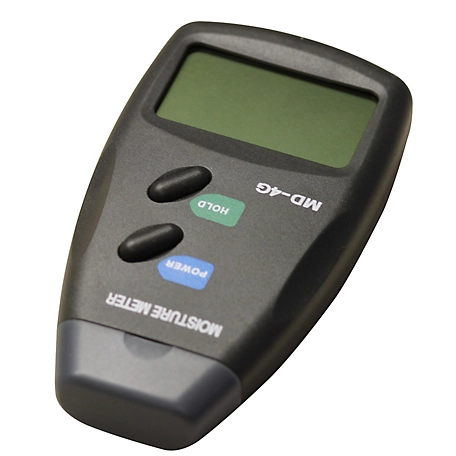Look Into the World of Moisture Meters: Every Little Thing You Need to Know
In the realm of moisture meters exists a globe of precision and usefulness that usually goes undetected. These devices, while apparently straightforward, hold a wealth of details that can substantially impact numerous markets and applications. Understanding just how moisture meters operate, the various types available, and their varied uses can drop light on their significance in ensuring quality and performance. By checking out the details of moisture meters, one can uncover a valuable tool that transcends simple dimension, providing understandings that can make a considerable difference in countless fields.
How Moisture Meters Work
Moisture meters run by measuring the electric conductivity or capacitance of materials to identify the dampness web content present. These meters are invaluable tools across numerous sectors, including woodworking, farming, and building and construction. By making use of various methods such as pin-type or pinless modern technology, dampness meters give accurate readings that help professionals make informed decisions.
Pin-type wetness meters function by placing the sharp pins right into the product being checked. The electric conductivity in between the pins is then determined, with higher moisture degrees leading to increased conductivity. Moisture Meter. On the other hand, pinless dampness meters make use of electro-magnetic signals to check a larger area without causing any kind of damages to the product's surface. These meters are suitable for swiftly evaluating wetness levels in huge areas or ended up products.
Regardless of the approach utilized, moisture meters play a critical function in stopping issues such as mold and mildew development, structural damages, or item flaws triggered by excess moisture. Recognizing exactly how these meters job is crucial for guaranteeing the top quality and integrity of products in different applications.
Sorts Of Moisture Meters
Offered the vital role moisture meters play in numerous industries, it is important to comprehend the various types readily available to experts for properly evaluating dampness levels - Moisture Meter. There are largely two primary types of dampness meters: pin-type and pinless wetness meters

On the other hand, pinless wetness meters use electro-magnetic sensing unit plates to scan a bigger area of the product without creating any kind of damage. This kind appropriates for swiftly scanning large areas and is generally utilized for floor covering, walls, and ceilings. Pinless meters are practical for taking analyses on finished surface areas without leaving any visible marks.
Both sorts of moisture meters have their benefits and are picked based on the particular needs of the job available. Recognizing the differences between these kinds is essential for experts to make exact moisture evaluations.
Applications Throughout Industries
Building professionals depend on moisture meters to analyze the wetness degrees in building products like wood, drywall, and concrete, which is important for maintaining architectural integrity and preventing problems like rot or mold. The flooring sector utilizes wetness meters to gauge the moisture material in subfloors before mounting various floor treatments, preventing expensive problems due to excess moisture. In the food industry, wetness meters are made use of to monitor and manage moisture degrees in products such as grains, nuts, and dried out fruits to keep quality and top quality.
Tips for Using Wetness Meters
When gauging the dampness content in various view materials,Use the wetness meter's calibration setups to make certain exact analyses. Calibration is essential for the appropriate useful link performance of a wetness meter. Prior to each usage, it is suggested to examine and readjust the calibration setups according to the details product being tested. Additionally, see to it the meter is readied to the appropriate moisture range for the material you are measuring to obtain the most precise outcomes.
When utilizing a pin-type dampness meter, place the pins to the proper depth recommended for the product being evaluated. This makes sure that the wetness readings are drawn from the proper deepness within the material, providing an extra precise representation of its moisture content. For pinless moisture meters, bear in mind to preserve proper call with the material's surface area to obtain reliable analyses.
Regularly inspect and replace the batteries in your you can try this out wetness meter to stop imprecise readings because of reduced power. Store the meter in a secure and dry area when not being used to extend its lifespan and preserve its precision. By adhering to these tips, you can optimize the performance of your wetness meter and acquire specific moisture material dimensions throughout different materials.
Upkeep and Calibration
To make certain the accuracy of wetness material dimensions, normal maintenance and calibration of the moisture meter are necessary actions in its proper functioning. Upkeep includes keeping the wetness meter tidy and free from particles that can influence its analyses. It is essential to follow the manufacturer's guidelines for cleaning up to stop damages to the tool. In addition, normal calibration is essential to validate the precision of the readings. Calibration changes the wetness meter to make certain that it provides consistent and reputable outcomes.
Calibration must be carried out occasionally, particularly if the dampness meter is utilized frequently or in important applications where accurate measurements are required. By maintaining and calibrating the dampness meter regularly, users can rely on the accuracy of the moisture content measurements acquired.
Verdict

In conclusion, moisture meters play an important role in various sectors by precisely measuring the dampness web content of materials. Understanding just how these gadgets function, the different kinds offered, and proper upkeep and calibration are crucial for obtaining trusted outcomes. Whether in agriculture, manufacturing, or building, the use of moisture meters helps ensure quality assurance and efficiency in procedures.

In final thought, dampness meters play a vital function in various sectors by properly gauging the moisture web content of materials.